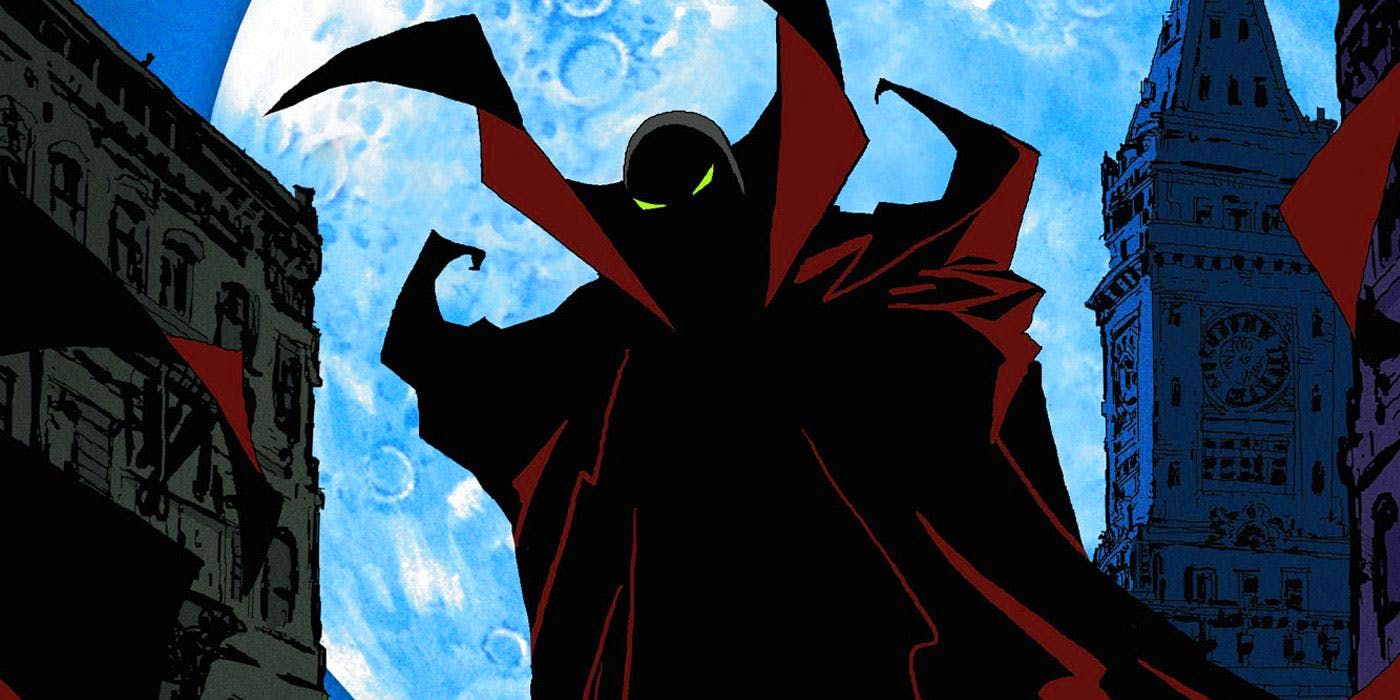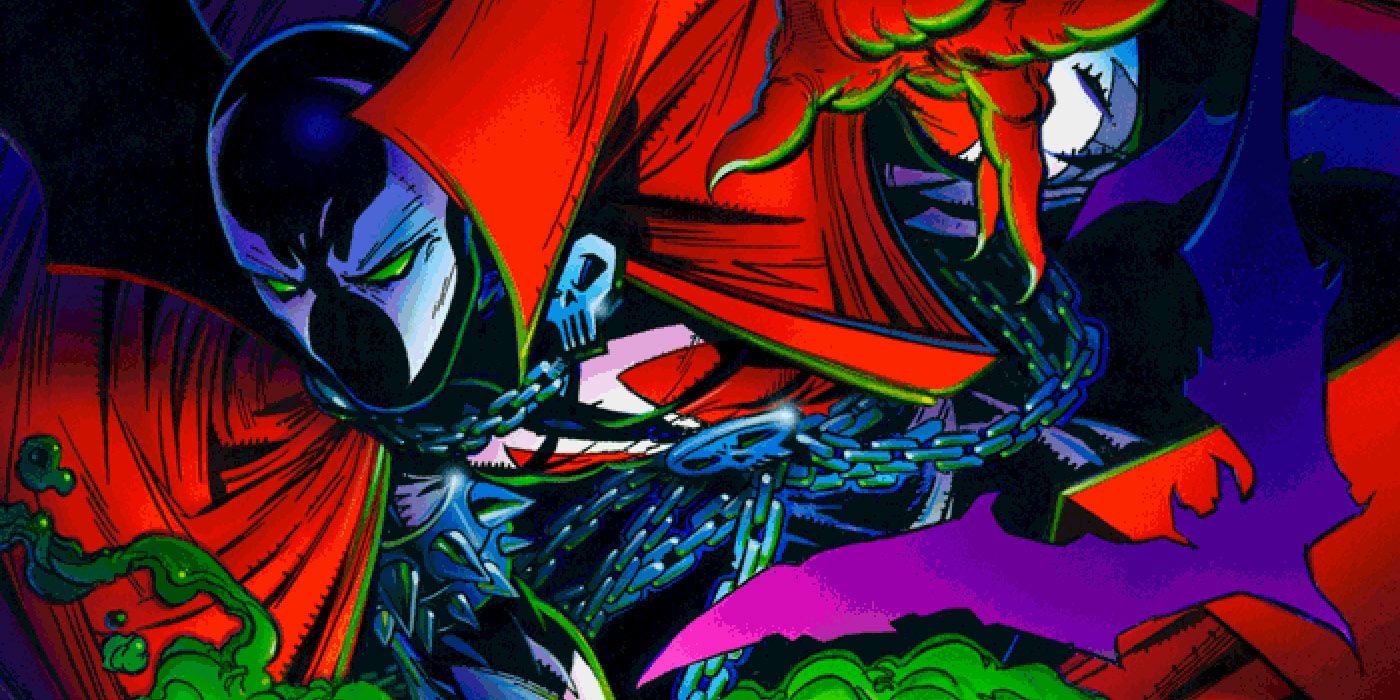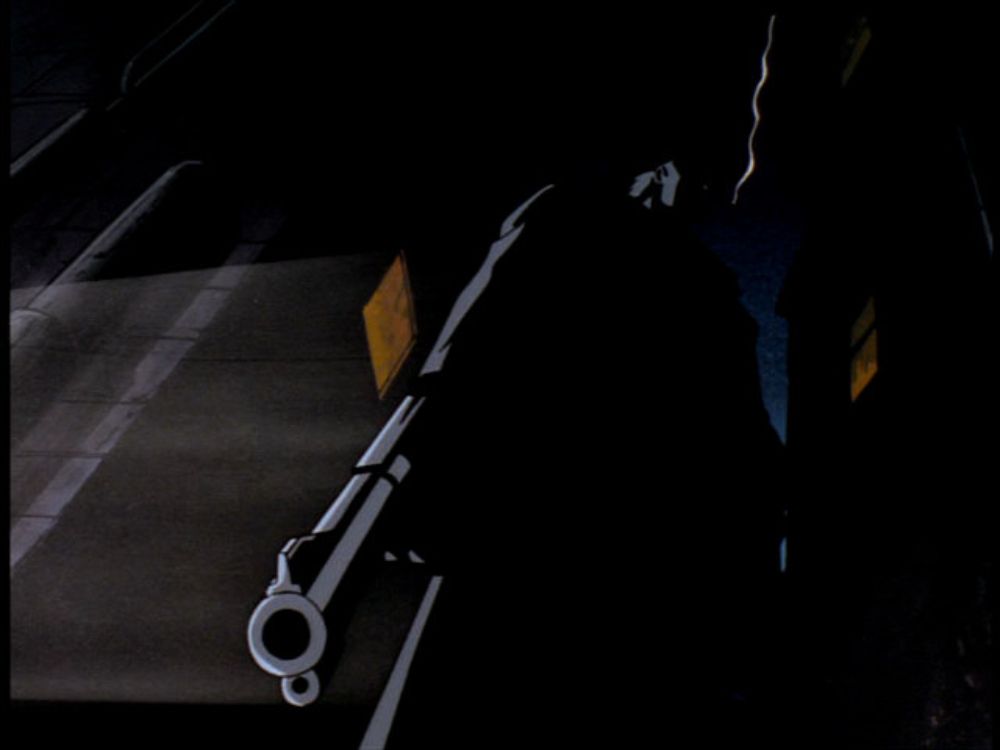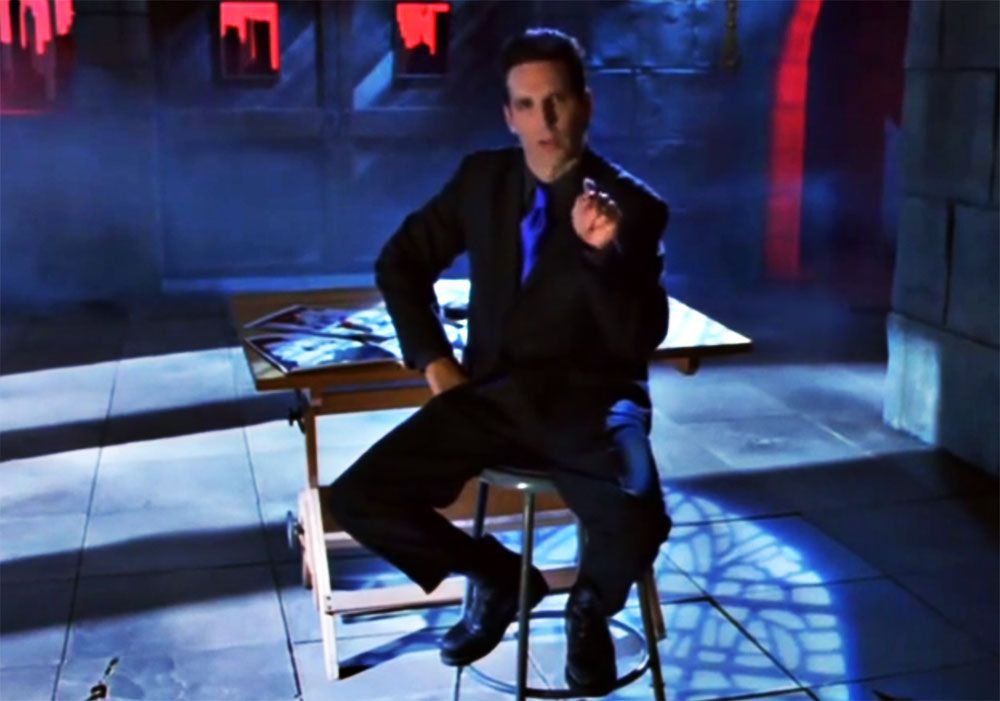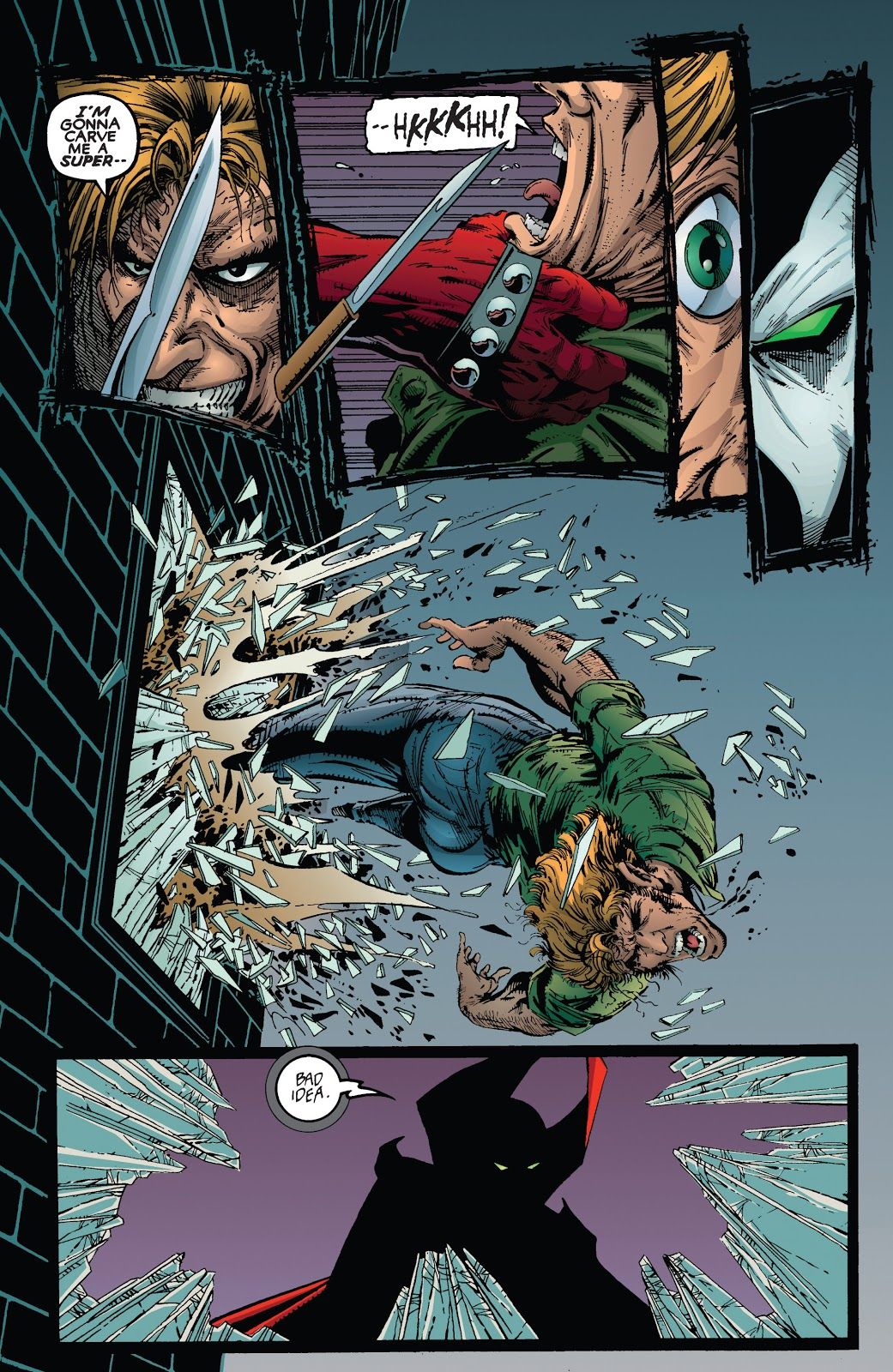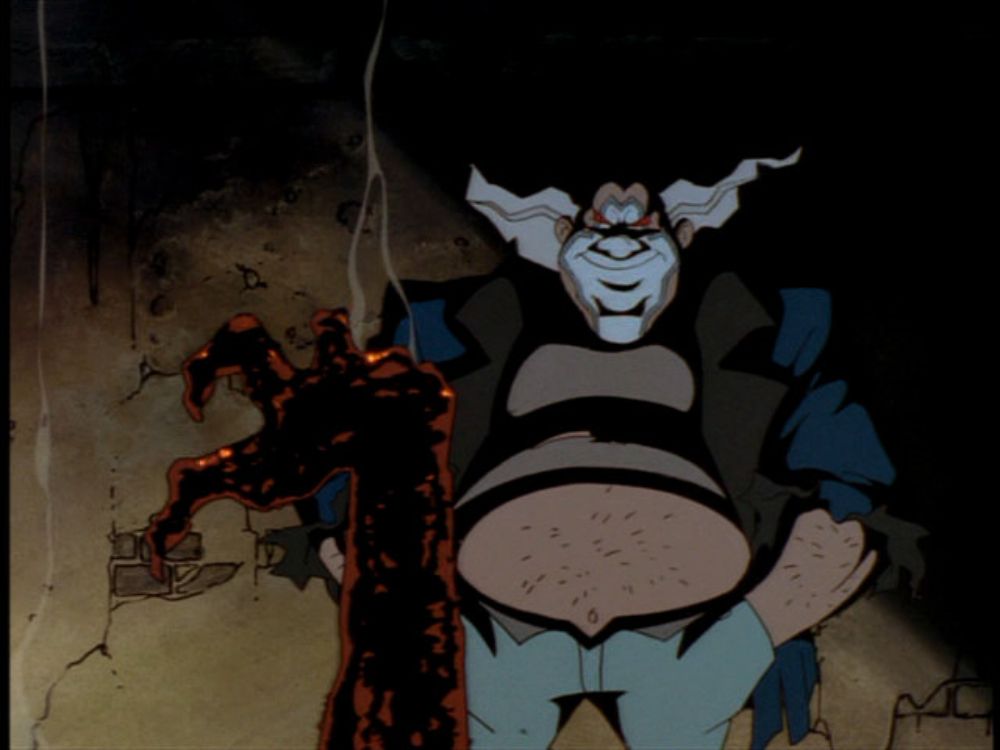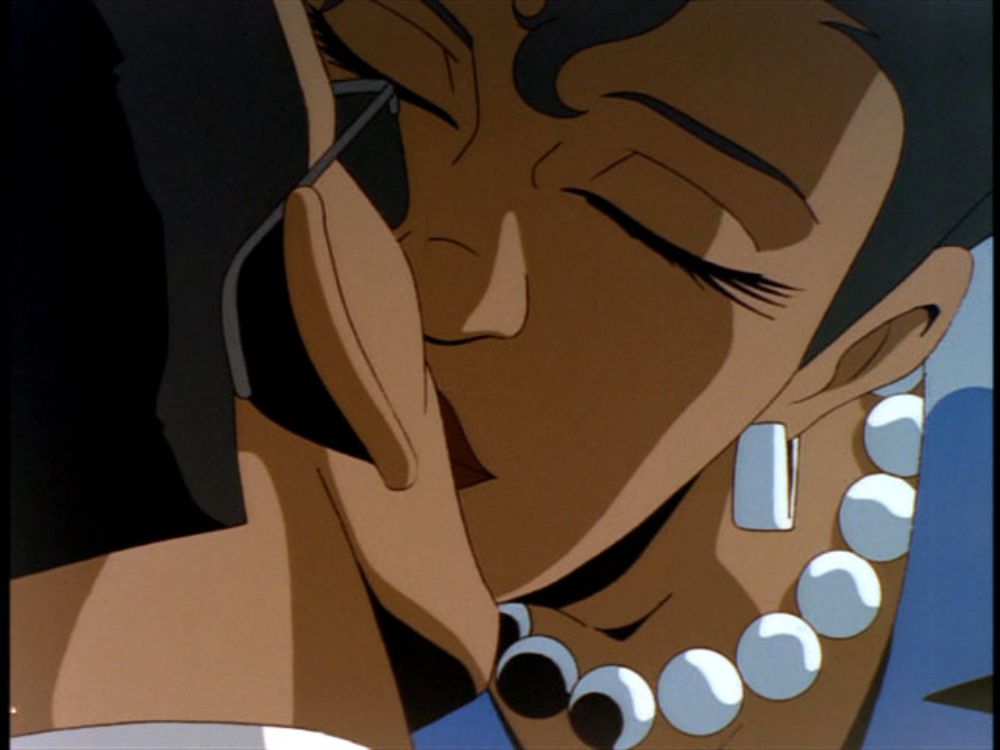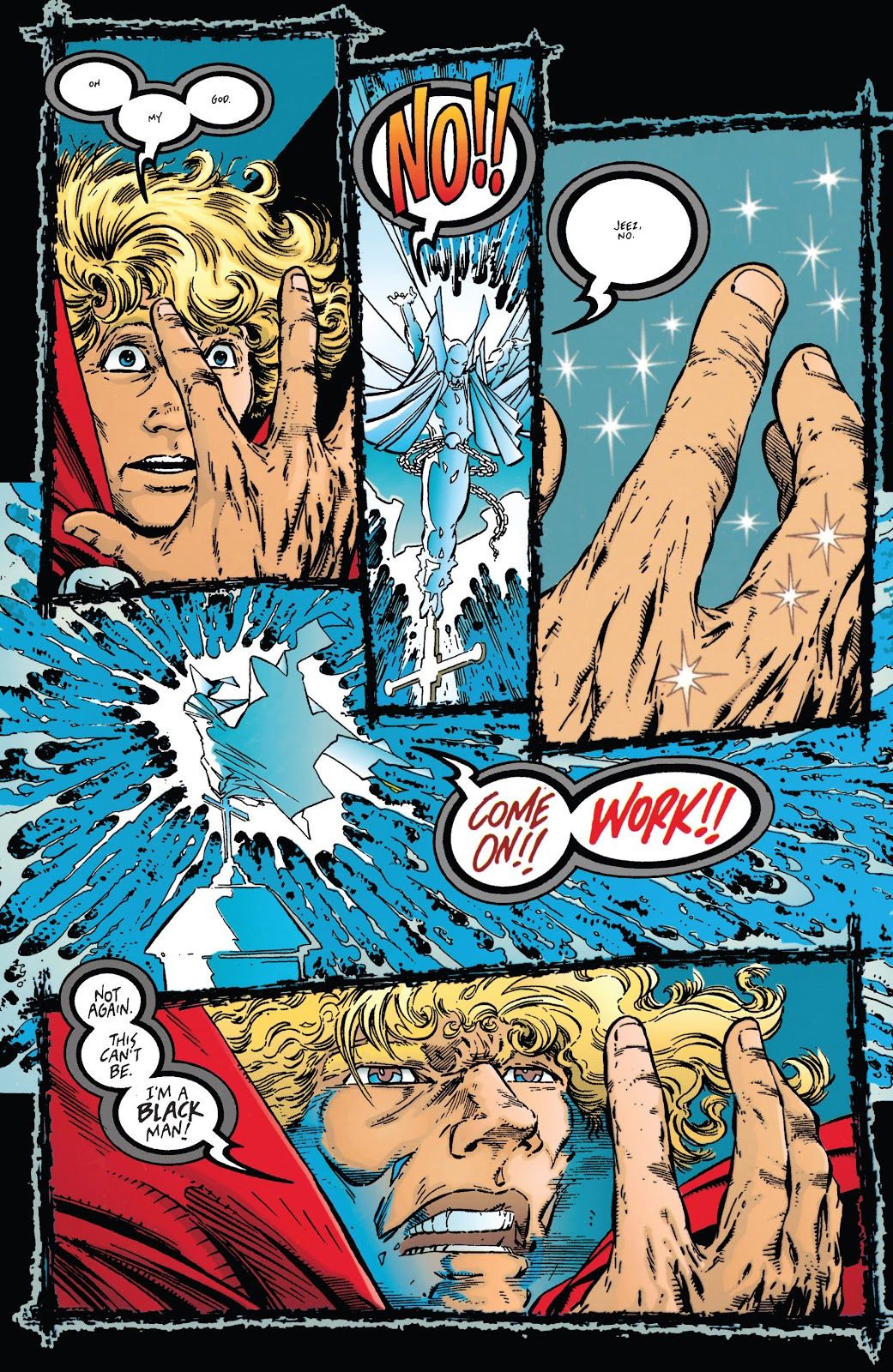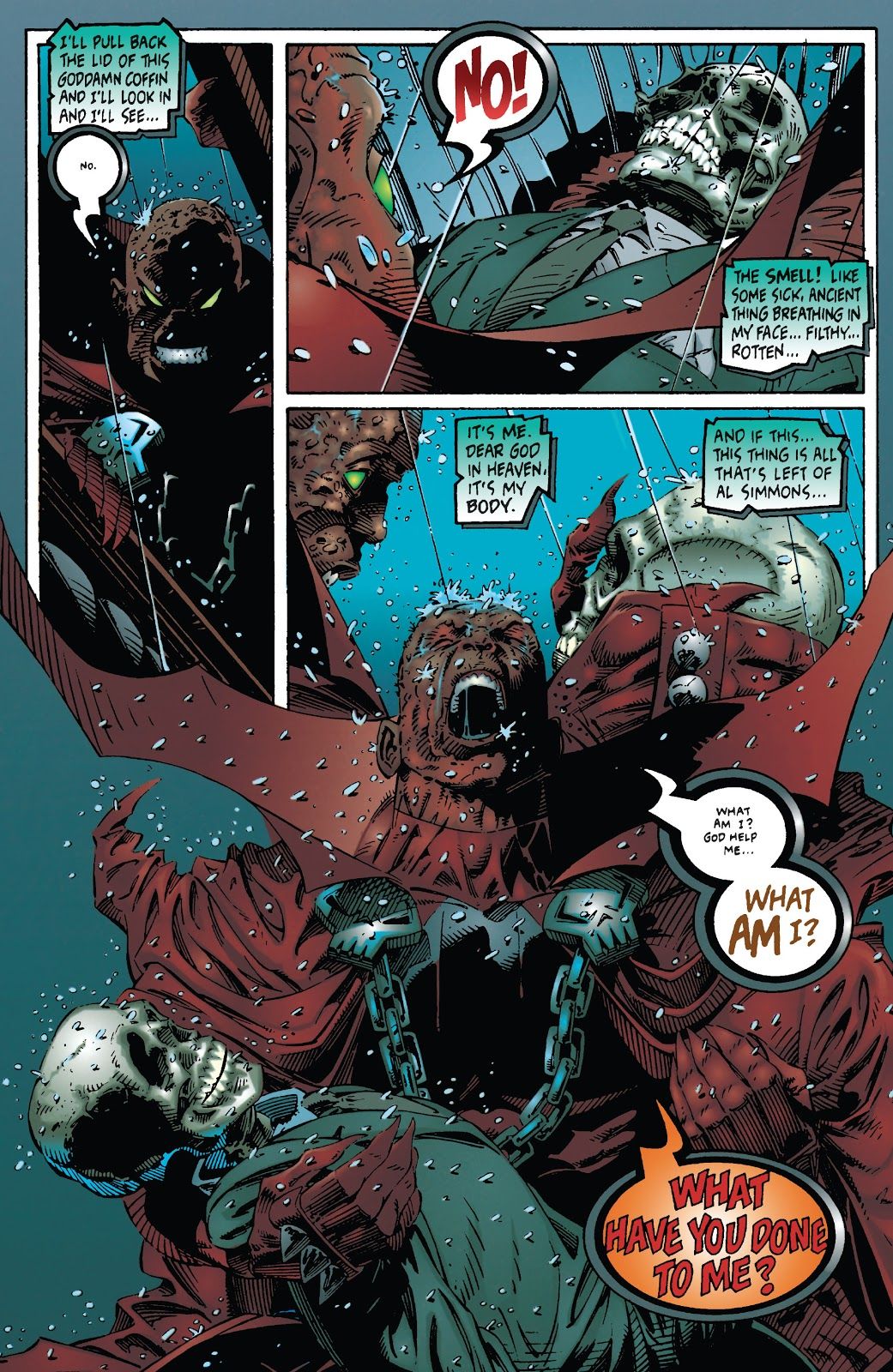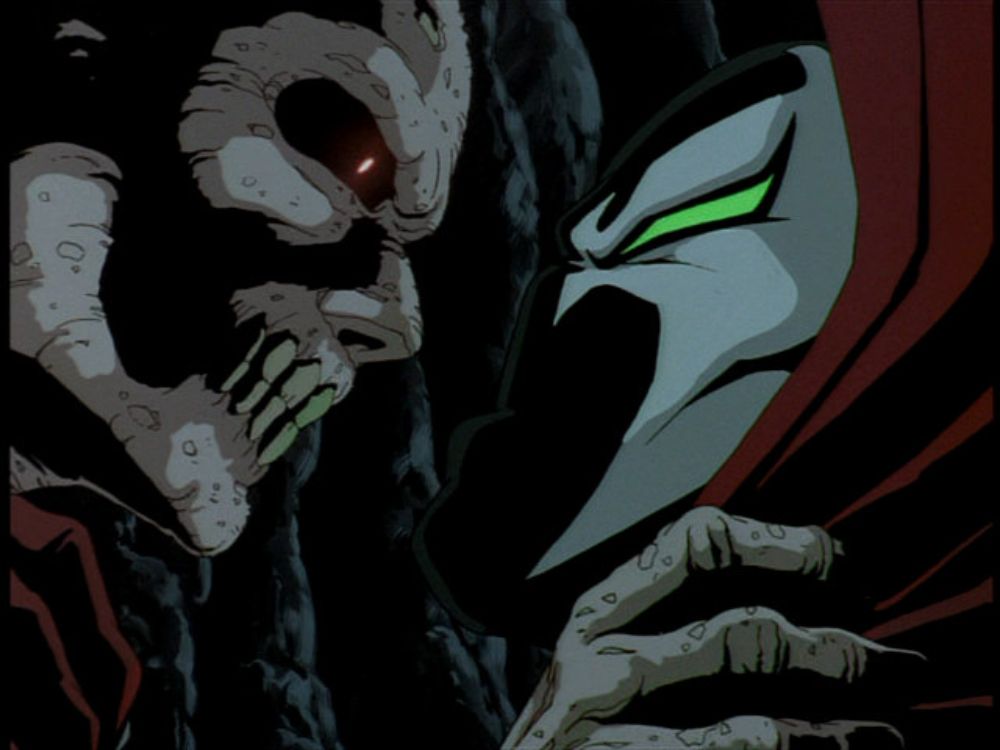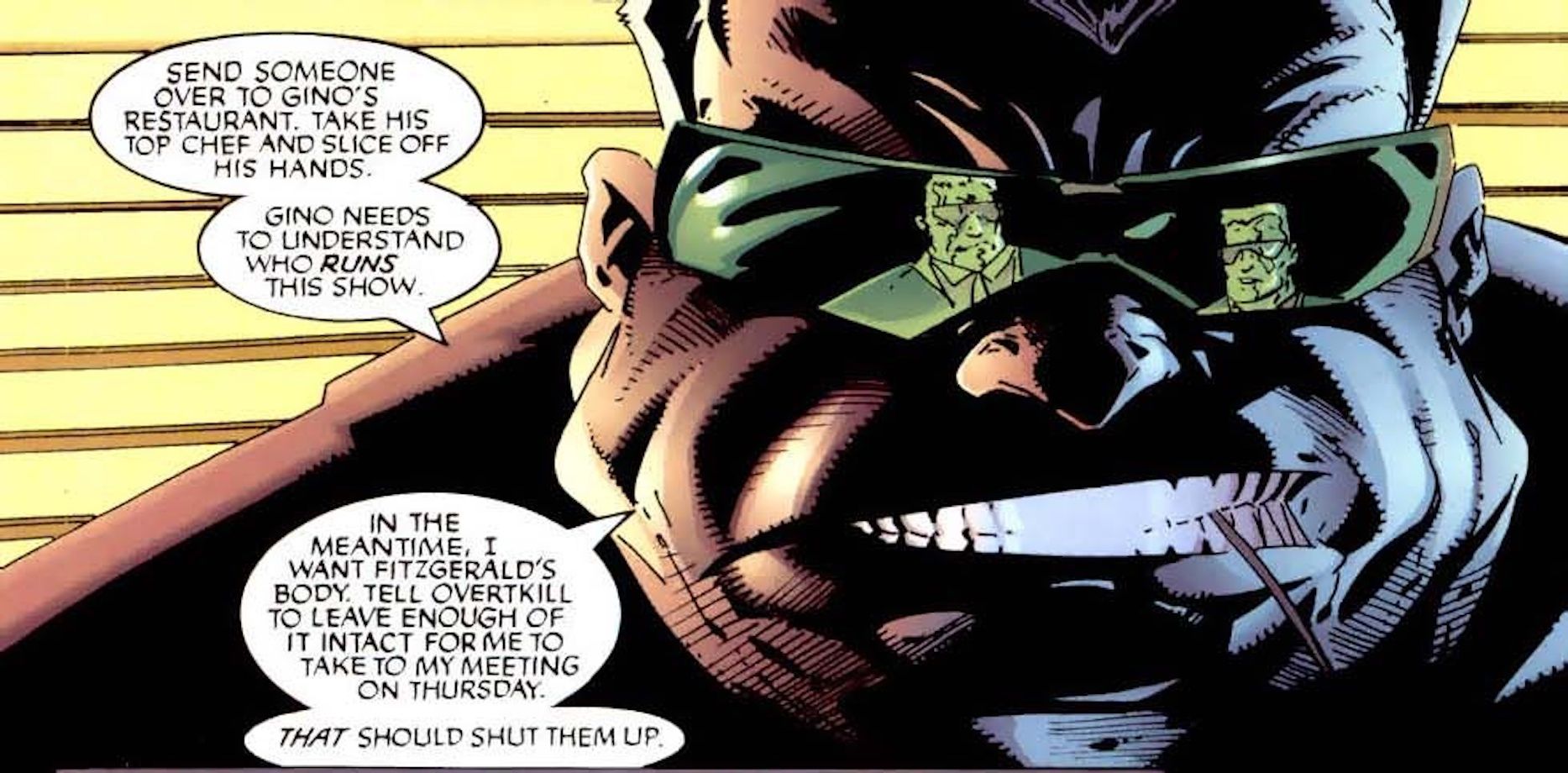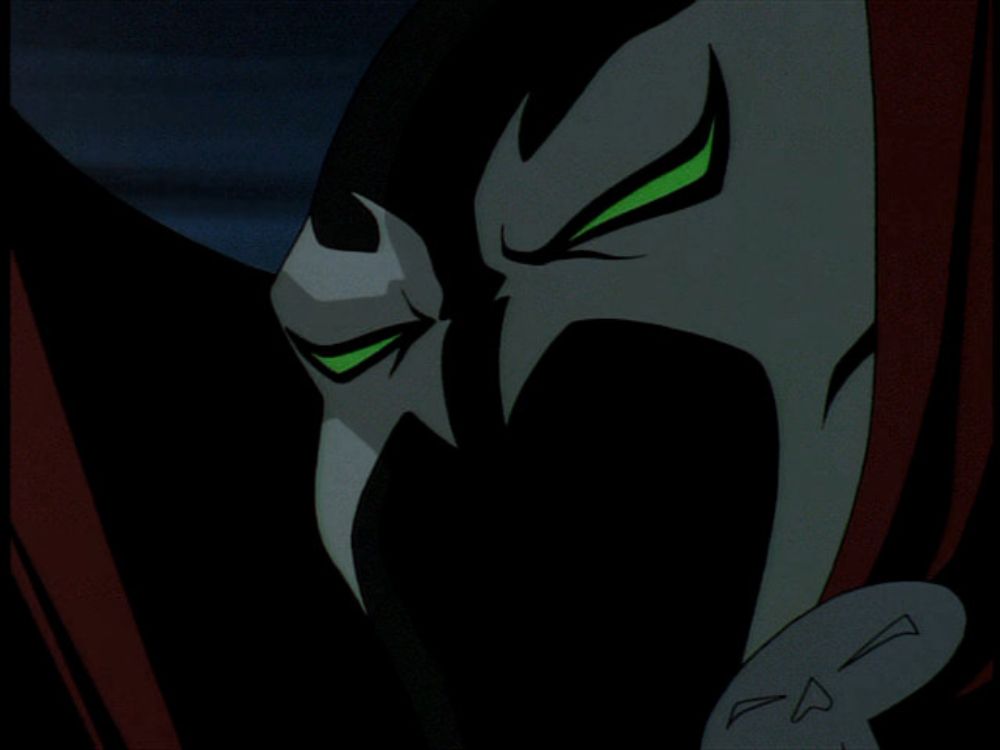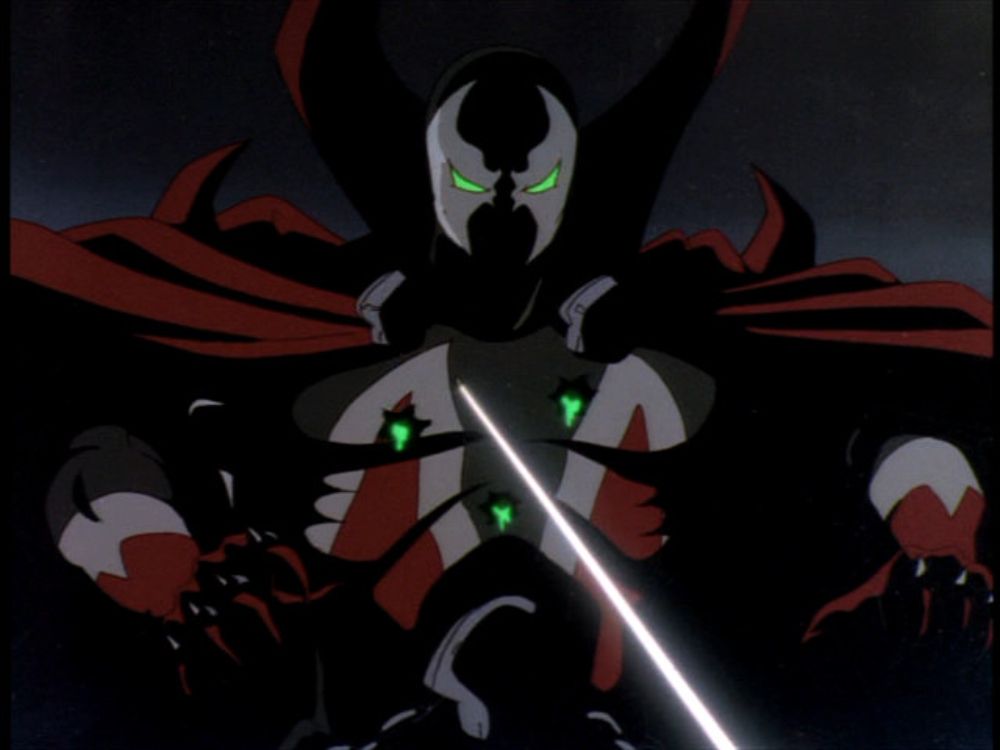Welcome to Adventure(s) Time's sixty-eighth installment, a look at animated heroes of the past. This week, we're going back to another animated series from the glory days of Image Comics. Actually, this is possibly the most widely-known of the 1990s Image-inspired animated series.
May 16th, 1997 brought the debut of Todd McFarlane's Spawn, HBO's initial foray into adult animation. As evidenced by the title, McFarlane was heavily involved with this production. After rejecting other offers, McFarlane felt confident he could present his property the way it was meant to be seen on HBO. And, within the context of these times, it's important to remember Spawn was an undeniable "hot" property. McFarlane had some muscles to flex, and he wasn't shy about doing so.
While HBO's Spawn isn't a direct adaptation of the comics, it's darn close in places. Let's go back to the pilot, "The Burning Vision" and see how the comics influenced the story. Written by Alan McElroy, featuring animation from Ko-Ko Entertainment and Sheen Production, Spawn opens with an attention-grabbing pilot. The animation is solid, the voice acting is unique, and the story...well, it opens with two foul-mouthed mob assassins brutally murdering three men.
Okay, before we get there, we have to address the show's actual opening. It's Todd McFarlane himself, on a soundstage, inking some pages of Spawn before turning to camera. He then ruminates on the nature of evil, or life, or whatever cryptically deep thoughts allegedly fit the theme of the episode. Maybe it's silly in retrospect, but hey, it's Todd's show. Outside of Stan Lee, it's hard to imagine any comics pro who's successfully branded himself like Todd.
Anyway, back to the murders. The murdered men are reporters, receiving mysterious info from their source. The mobsters arrive, kill them, but soon meet their own fate at Spawn's hands. Spawn actually attempts to save their final victim, but due to his seeming incompetence, the guy's murdered anyway. And Spawn didn't come across as too eager to help out in the first place, striking some poses before slowly confronting the mobsters.
Charitably, we can guess Spawn's still out of it. Still disoriented after arriving here on Earth, following some vague deal with the devil. While HBO's Spawn opens with a voiceover from Cogliostro, Spawn's guide on Earth, the comic begins with Spawn's first-person narration. He gets into an "intro fight scene" there as well. This time, he stops a gang from assaulting a woman.
These two sequences sum up the difference between the show's first season and the comics. McFarlane has acknowledged he wasn't working with a concrete plan from issue to issue. It was more about drawing what moved him and introducing some cool ideas. The writing of the animated series is much tighter. Yes, the mobsters' scene is here to set the mood and establish Spawn's abilities. But it's not a random crime to be stopped; it's a critical piece of the show's season-long arc.
NEXT PAGE: The Animated Spawn Introduces Violator, Wanda and Al Simmons' Corpse
From there, both the comic and the cartoon have a bewildered Spawn discover his face now resembles hamburger meat. He then encounters...why, it's another foul-mouthed, crude character. It's the Violator, the demon sent to keep an eye on Spawn while on Earth. He disguises his demonic form with the facade of a short, dirty clown. (Officially deemed "The Clown" once Todd began making toys.) Violator teases Spawn in both stories, although we're five minutes into the pilot and two issues into the comics series by now.
Both stories also have Spawn, still with partial amnesia, seeking out his wife. There's a major variation here. In the cartoon, he dons a coat and spies on Wanda, discovering she's married his best friend Terry. In the comics, Spawn decides to use his magic powers to restore his true appearance first. The magic doesn't work, transforming Spawn into a blond white guy. "This can't be! I'm a black man!" he shouts in disbelief.
Almost twenty years passed before McFarlane acknowledged this odd plot point. Apparently, this other guy is Jim Downing, according to the Spawnworld fansite, "one of the Legion of Lost Souls, hidden within Al Simmons." Not relevant at all to the cartoon, which ignored all of this.
The comics Spawn goes along with the disguise, actually interacting with his wife briefly. The HBO series is more consistently bleak; Spawn can only watch from the distance. Violator taunts Spawn again, reminding him that he is indeed dead. Spawn decides to visit his grave to make sure. You'd think this would be an easy call to make, given the reality of this world. In the comics, however, it didn't occur until issue #16. (The first guest issue of the series, written by Grant Morrison and penciled by Greg Capullo.)
It's a memorable scene in the comics. The animated series, however, out-creeps it by a mile. Spawn is howling over his own corpse, when it's open jaw snaps back to life. The corpse then grabs Spawn, berates him for making such a stupid, stupid deal.
Whether or not this scene is purely symbolic is irrelevant. It works, successfully establishing this as not just another superhero story. It's one thing to say your hero made a deal with the devil and now has cool powers. Establishing what that means, having that evil follow him around, leap out at him when he leasts expects it, is another.
From there, Spawn stops a group of cops from brutalizing an Internal Affairs officer investigating them. It's a fairly gratuitous action scene, but it is brief, and works to emphasize Spawn's capacity for violence. Violator observes this, encourages Spawn to give into these dark urges. The rest of the episode features two shadowy characters discussing the earlier murders. Mobster Tony Twist is furious that his hitmen were killed doing a favor for bureaucrat Jason Wynn. Wynn dials the politician he arranged the favor for, warning him he can't keep his child-killing son a secret forever.
Is this "try-hard," as the kids now say? Of course it is. But the producers were adamant about establishing this world, letting viewers know this wasn't Saturday Morning TV. (HBO wanted nudity in the TV-MA series. The animators worked it in by surrounding Twist with nude women in all of his appearances.)
NEXT PAGE: Why Tony Twist's Animated Spawn Incarnation Is Such a Surprise
What's amazing is the character of Tony Twist even making it to TV. McFarlane named the mobster after a hockey player, active in the early 1990s. The real-life Twist had no clue McFarlane had done such a thing, until this HBO series aired. An insulted Twist sued -- it didn't end too favorably for McFarlane. It's crazy that HBO's lawyers didn't catch this before it went to air. McFarlane even had a "real" name for the character, "Antonio Twistelli," in the comics they could've used.
Placing Spawn in the path of the mob is another idea from the early issues. And another that McElroy improves upon. Originally, Violator goes on a killing spree of mobsters, hoping Spawn will take the blame. Why? Some vague idea that went nowhere, truthfully. The HBO series actually ties the mob in with a larger story involving Washington corruption and Spawn's past as a government agent. It's smart writing, taking inspiration from the comics but also weaving the ideas together.
Todd McFarlane's Spawn will continue to borrow ideas from the comics this season, threading them into an impressive story. Years before Netflix and prestige TV brought us the season-long movie, Spawn was actually there first.
THE WRAP -UP
DESIGN-Y
It's not nearly as stylized, but much of the look of Todd McFarlane's Spawn is owed to Eric Radomski. Coming from Batman: The Animated Series, Radomski was already skilled at creating the shadowy look McFarlane desired. The character designs in Season One often don't quite work for animation, attempting to scale down the more detailed look of the Spawn comic, but not going far enough. Spawn himself looks great in this opening episode.
The character model is from Greg Capullo, and several shots this episode look as if they came directly from the comic. McFarlane will later declare you should never see Spawn's face fully in the light, but I think his design looks quite nice in these early episodes.
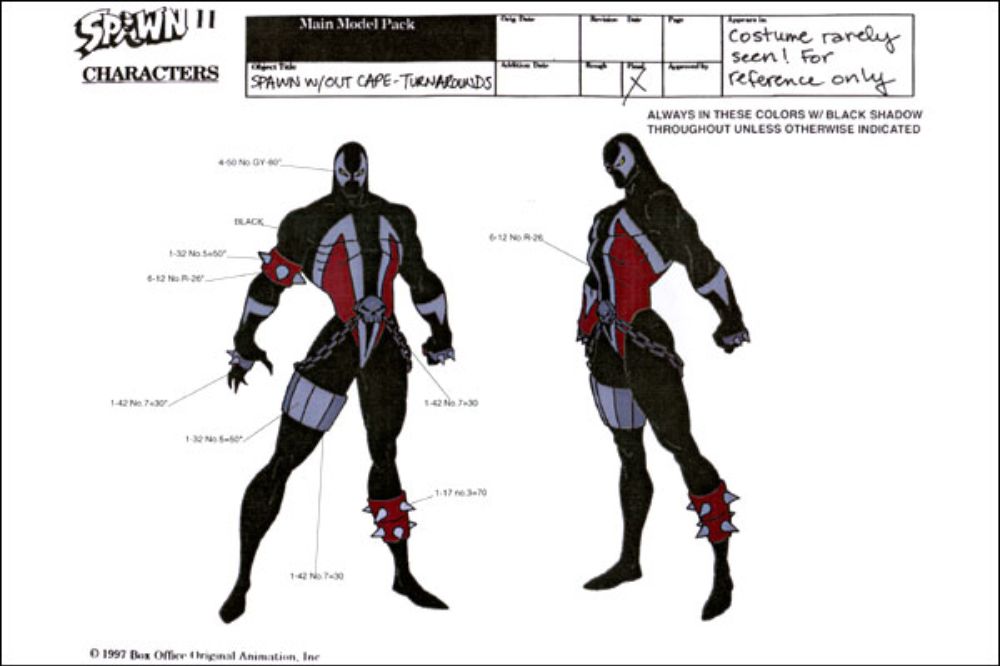 HEY, I KNOW THAT VOICE
HEY, I KNOW THAT VOICE
Spawn is voiced by Keith David, one of the most prolific voice actors of the past twenty-five years. He's appeared in numerous live action films, as well. Among them, Platoon, Crash, There's Something About Mary, and Barbershop.
(NOT) APPROVED BY BROADCAST STANDARDS & PRACTICES
I don't think fifteen seconds of this show could air on network TV. Amazingly, McFarlane somehow assembled a PG-13 cut to sell on VHS during the show's run.
STRAIGHT OUT OF HELL (AND THE '90s)
The audio commentary for another '90s Image show, The Maxx, reveals McFarlane was close to signing with the same production company and following a similar approach. That would mean taking actual artwork from the comics and directly translating their story to TV. While it would've been nice to see McFarlane and Capullo art as faithfully translated as Sam Kieth's...it's likely for the best McFarlane went in a different direction.
Fans embraced the HBO series because it featured several moments they remember from the comics--while also telling a new, more coherent story. Years later, childhood McFarlane fanatic Robert Kirkman will see The Walking Dead adapted in a similar fashion. Many of the familiar moments are there, but with a more sophisticated execution. Alan McElroy deserves real credit for what he accomplished with his work on Spawn. Shockingly, he's also the credited writer for the underwhelming 1997 film. Perhaps this is the difference between working with HBO and the more traditional studio system. I have a feeling forty thousand studio notes, all hoping to avoid controversy, killed the film. HBO embraced the controversy, and it paid off for them.
That’s all for now. If you have any suggestions for the future, just leave a comment or contact me on Twitter.

